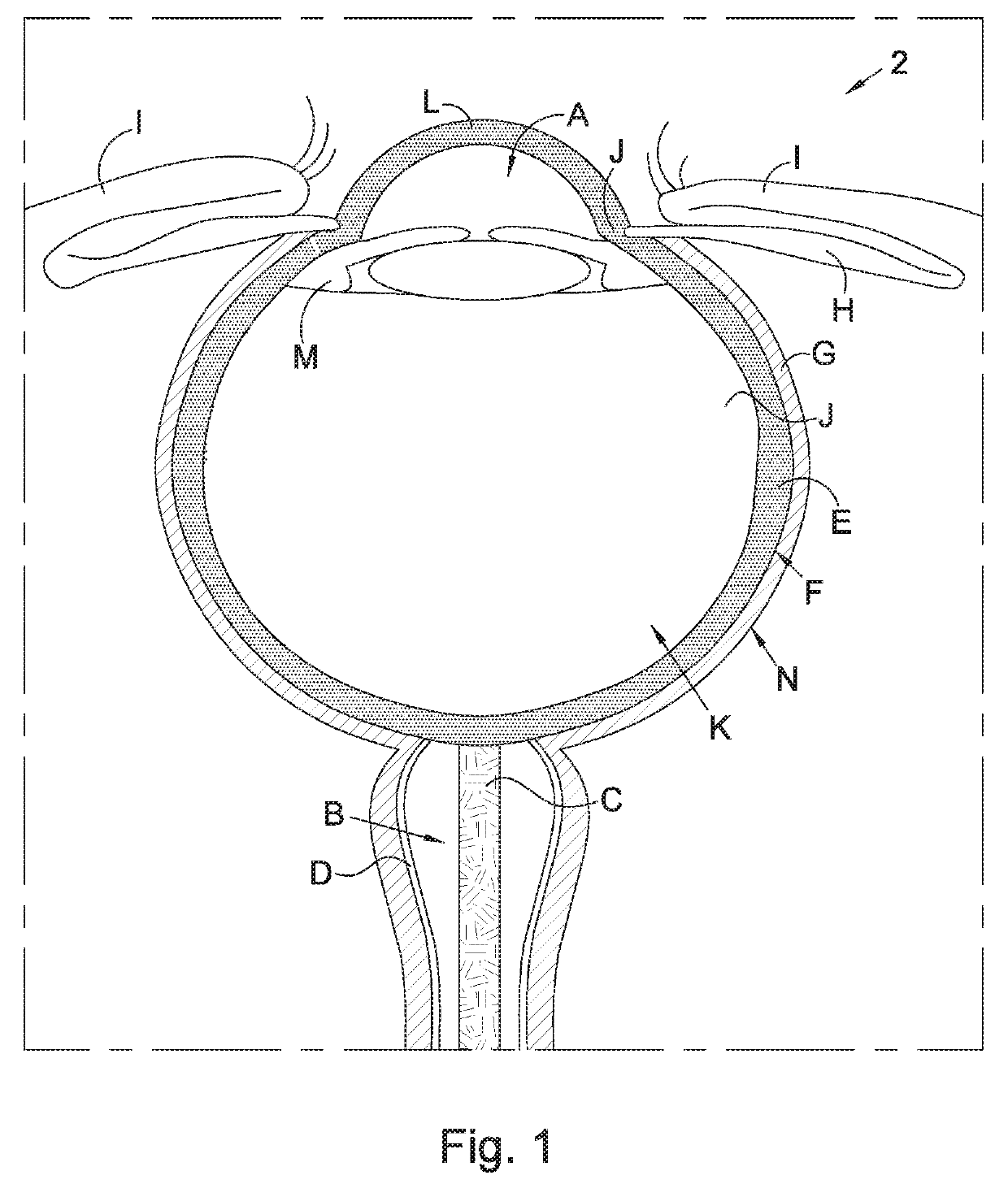A shunt system, shunt and method for treating an ocular disorder
a shunt and ocular disorder technology, applied in the field of shunt systems, can solve the problems of glaucoma damage, glaucoma damage, defect enlargement, etc., and achieve the effect of preventing the distal end from being pulled ou
- Summary
- Abstract
- Description
- Claims
- Application Information
AI Technical Summary
Benefits of technology
Problems solved by technology
Method used
Image
Examples
Embodiment Construction
[0104]With reference to FIG. 1 of the drawings, a cross-sectional view illustrating anatomical parts of a human eye 2 which are required for use in the description which follows below, comprises:[0105]A: Anterior chamber filled with aqueous fluid[0106]B: Subarachnoid space filled with cerebrospinal fluid[0107]C: Optic nerve[0108]D: Optic nerve sheath[0109]E: Sclera[0110]F: Subtenon's space[0111]G: Tenon's capsule[0112]H: Conjunctiva[0113]I: Eyelids[0114]J: Limbus and trabecular meshwork[0115]K: Posterior segment filled with vitreous jelly[0116]L: Cornea[0117]M: Ciliary body[0118]N: Ocular globe
[0119]With reference to FIGS. 1 to 20 of the drawings, a shunt in accordance with the invention, is designated generally by the reference numeral 10. The shunt 10 is adapted for implantation in the human body so as to provide for flow communication between aqueous fluid in the anterior chamber A of the eye and cerebrospinal fluid in the subarachnoid space B surrounding the optic nerve C. The s...
PUM
 Login to View More
Login to View More Abstract
Description
Claims
Application Information
 Login to View More
Login to View More - R&D Engineer
- R&D Manager
- IP Professional
- Industry Leading Data Capabilities
- Powerful AI technology
- Patent DNA Extraction
Browse by: Latest US Patents, China's latest patents, Technical Efficacy Thesaurus, Application Domain, Technology Topic, Popular Technical Reports.
© 2024 PatSnap. All rights reserved.Legal|Privacy policy|Modern Slavery Act Transparency Statement|Sitemap|About US| Contact US: help@patsnap.com










